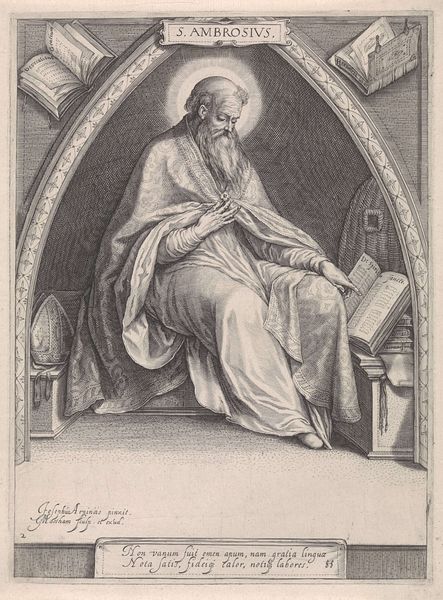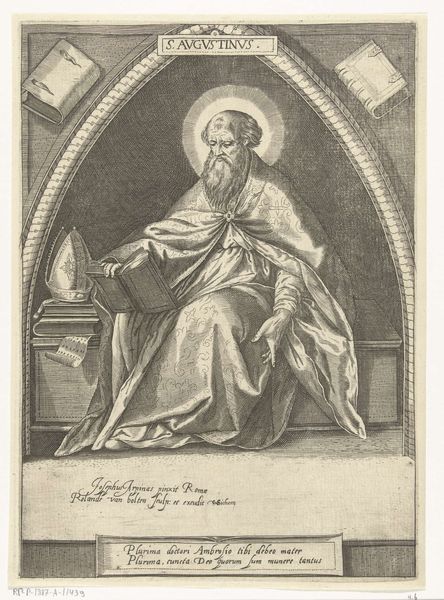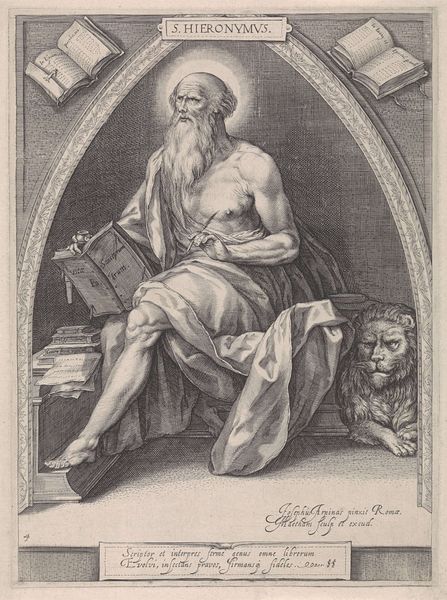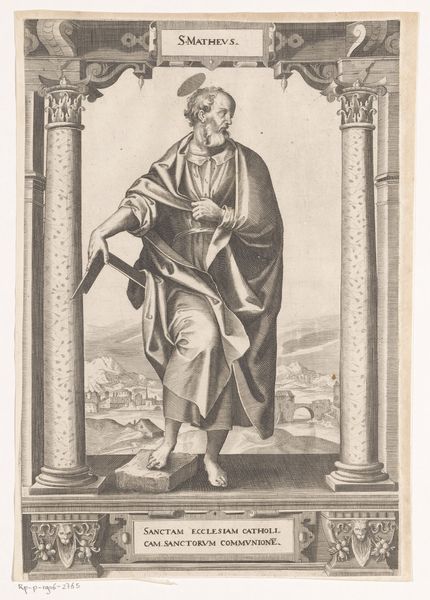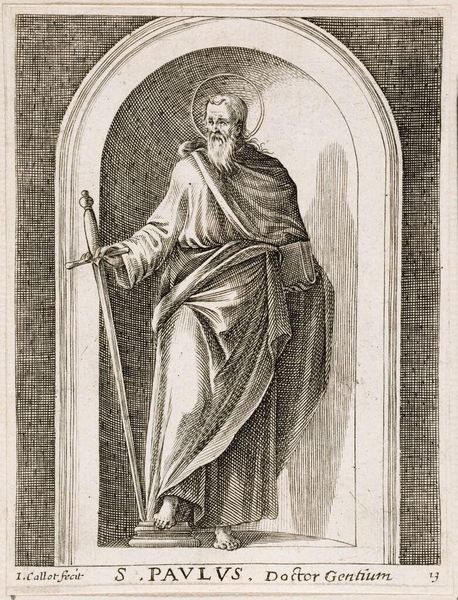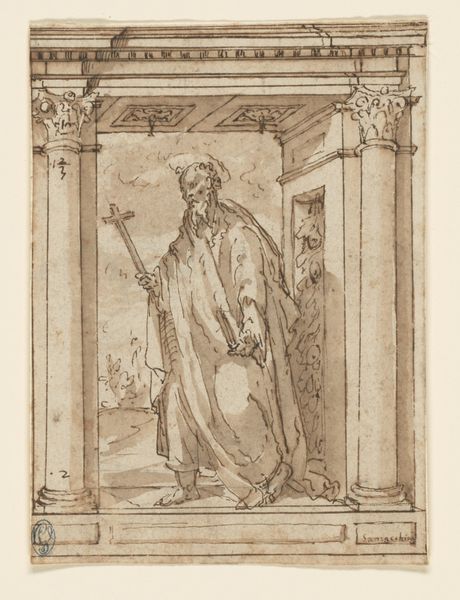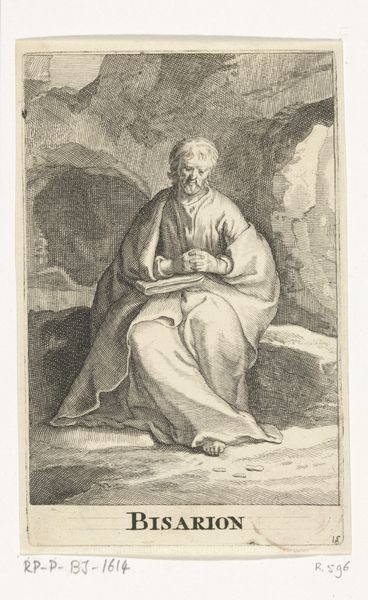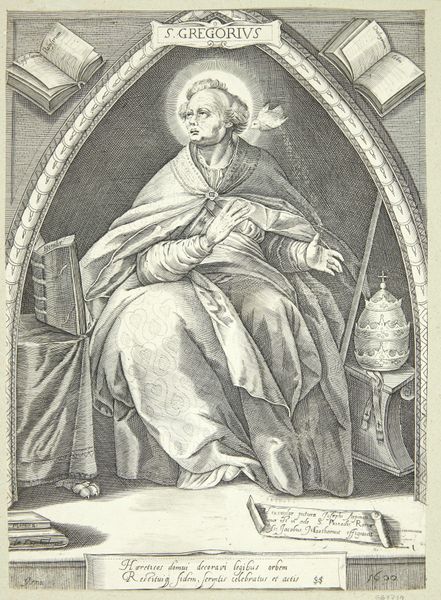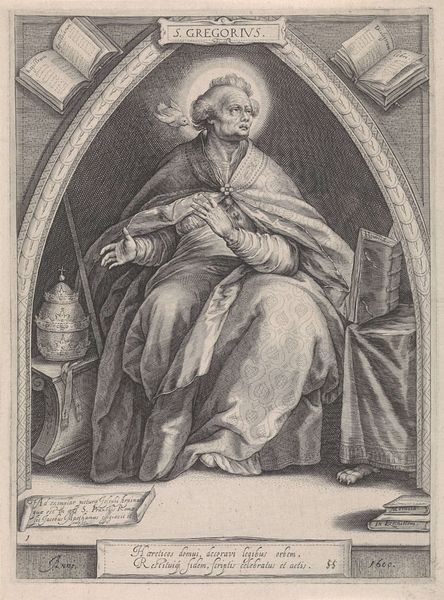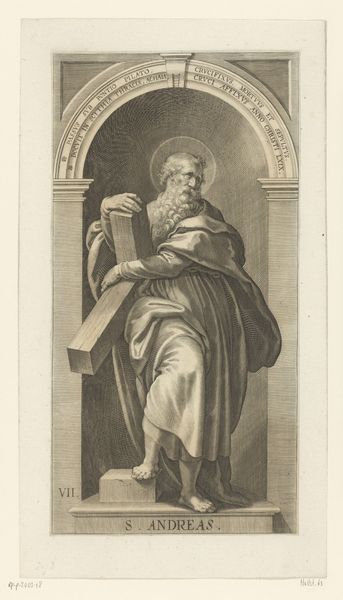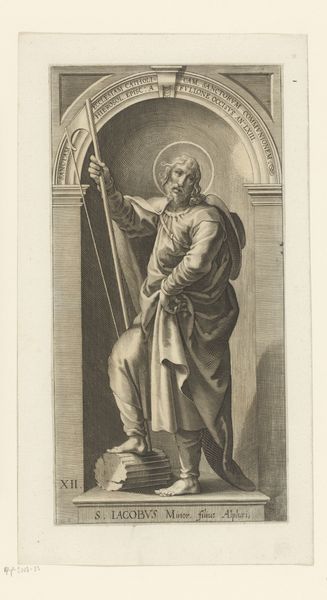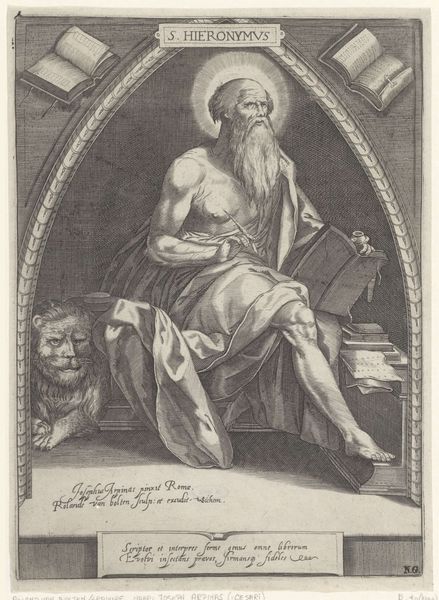
print, engraving
#
portrait
#
medieval
# print
#
old engraving style
#
portrait drawing
#
history-painting
#
engraving
Dimensions: 288 mm (height) x 206 mm (width) (bladmaal)
This engraving of St. Augustine was made by Jacob Matham around 1600. Matham was Dutch but worked in Italy at a time when Rome was the undisputed center for religious art. Matham's print reproduces the visual codes that the Catholic Church used to establish its authority. Augustine is pictured in the robes of a bishop with a halo designating his sainthood. He is surrounded by books, which signal the importance of theology and the Church Fathers. These symbols worked as a form of propaganda during the Counter-Reformation when the Catholic Church was fighting to retain its power in the face of the Protestant movement. To understand the impact of images like this one, historians look to sources that give insight into the social and political context of their making. These include official documents, pamphlets, and other texts, as well as visual comparisons with similar images. Only by understanding the culture in which it was made can we understand the institutional power this image once held.
Comments
No comments
Be the first to comment and join the conversation on the ultimate creative platform.
